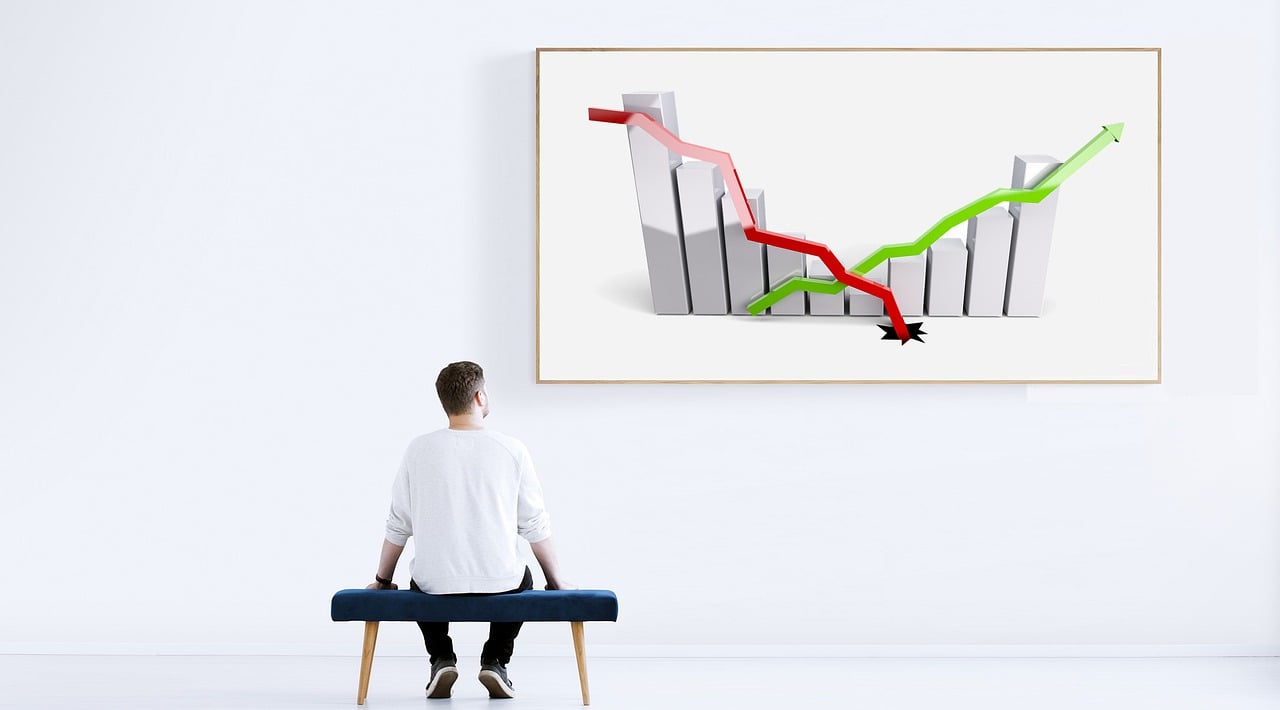Imagine it is 2007 and your portfolio growth is beginning to slow. You have no reason to believe your account balances will drop over the coming years, so you stay the course with your current strategy. Then the market begins to experience some volatility. Your portfolio starts to fluctuate a little and you become nervous, but shrug it off and decide the volatility is only short term. Fast forward to October 2008 when the US economy’s future becomes very uncertain and your portfolio seems like it is in a free fall. Who did you turn to? If you were like most people then you probably were talking to friends, family, or financial professionals about what to do or where to invest. Now imagine you didn’t have someone to talk to and instead were using a computer trading algorithm (i.e. Robo Advisor) to manage your portfolio risk. Would you have stayed the course, or capitulated and sold some of your portfolio? If you capitulated then you may have been more likely to can your advisor and turn to the impersonal option of robo advice. According to Business Insider robo advice “essentially involves replacing face-to-face savings and investment advice with online, automated guidance and execution.” Now that might sound like the first step to SkyNet seizing control and robots taking over the world but let’s keep think positively. The following scenarios will highlight two examples that could diminish the popularity of Robo Advisors and turn them into a fad rather than the future.
Scenario 1: Financial Advisor Fees vs Robo Advisor Fees
For decades the financial services industry has charged their clients fees such as commissions, ongoing advisory fees, or ticket charges. Operating this way essentially created a “pay-to-play” relationship between investors and the investment companies. This relationship then created an implied expectation that the investment firm would provide value through information for the fees it charged. To disseminate the information investment firms hired licensed financial advisors and investment advisor representatives (IARs) to give advice and support to clients.
In the late-90’s the commercialization of the internet began to change how investment companies and their IARs interacted with the client. No longer were clients completely reliant on IARs for research, ideas, or advice. With the barrier between client and public information being drastically reduced, the ability to charge high fees also started to decrease. As market research became more readily available to everyone, the investment company and IAR’s investment performance began to come under pressure. Then came the Great Recession between 2008-2009 and investor performance took a big hit. This drop lead many to refer to the time period between 01/2000 and 01/2010 as the lost decade for large cap stocks because the point to point return for the S&P 500 index was negative. For many investors this was the last straw. Many began to fire their financial advisors and turn to index based investing predicated on the idea that if my advisor cannot beat the market, then why am I paying them?
From the ashes of the Great Recession rose multiple Robo Advisor platforms. Companies like Wealthfront and Betterment took the idea of algorithm trading to the mass market situated on the philosophy that markets are efficient, and the average investor will not beat the market. With the central tenant being “markets are efficient” and asset allocation determines over 90% of a portfolio’s average return, Robo Advisors no longer needed to chase portfolio returns and instead could focus on standardizing their process. In other words, these companies were able to convince investors that their primary goal was not to beat an index’s performance, but rather to create operational efficiencies by rebalancing an investment account periodically based on a customer’s goals and market volatility. In return for this service, these firms were able to lower their fees (as compared to financial advisors and IARs) significantly, with the average Robo Advisor platform charging annually between 0% and 0.40% for computer-based asset management services. Through the evolotion of their short existence these companies realized some investors did not want to completely eliminate the human factor. To meet this need they began offering clients the ability to speak with a financial representative, typically not dedicated to the client, for an additional fee. In some cases the total advisory fee paid is similar to what the advisors they fired charge today.
Now that you know Robo Advisor companies can charge as much as an advisor but for passive investing, there is one more hidden gem to consider. If you are a practicing attorney, then you may have read through your investment application with a fine tooth comb. On the other hand, if you are not versed in legal jargon, you will find (buried in legal disclosures and prospectuses) that these companies have complete discretion over which securities are available on their investment platform. What does this mean?
- This means that the entire universe of available investments are not necessarily accessible to their clients.
- Their investment strategies are typically passive, making the need to have additional investments seeking active return less important.
- After they select an investment for inclusion on their platform, they negotiate a revenue sharing agreement with the fund company.
Scenario 2: Market Crash
At the beginning of this article I highlighted an example of how market volatility led to a shift in the way that many investors managed their finances. It is important to understand that while no one likes to lose money, and fewer want to pay to lose money, market volatility is an integral component of investing. While some investors were unhappy with the advice from their financial professional, many stuck with their advisor and road out the downturn. As someone who worked with hundreds of households during the Great Recession, I attribute my success with my clients to a continuous open dialogue. At times I felt like I stepped into the shoes of their therapist and talked them away from the proverbial ledge.
Since 03/09/2009 the US large cap stock market, as measured by the S&P 500, has seemed to do no wrong and has climbed from 666.79 to 2465 (as of 08/16/2017). That is almost a 270% increase. Unfortunately there will come a point where that ride will end and the next market correction will unfold. During a time like that investors historically panic. Panic leads to emotional decisions. Since Robo Advisor platforms tout their online ease of use, and most likely employ index-based passive investing, many investors could liquidate their portfolios at an inopportune time without talking to a human being with a simple click of an button. How much would you pay to have someone in your corner to talk you away from the ledge?
Conclusion
The landscape of financial advice is constantly changing. At this point, it is unclear whether computer algorithms will take over other portions of financial services or fade away with the next market correction. Whether you talk to your advisor in person, through video-conferencing, or use a Robo Advisor, we encourage everyone to educate themselves on the type of advice they receive and the fees their advisor charges. The more you can educate yourself now, the more informed you will be when evaluating the type of advice you want.
We believe there will come a day when investors will prefer being treated like a person rather than simply a number, or investment account. That day will lead to death of Robo Advisors.
Content in this material is for general information only and not intended to provide specific advice or recommendations for any individual. Investing involves risk including loss of principal. No strategy assures success or protects against loss. Asset allocation and diversification does not ensure a profit or protect against a loss. There is no guarantee that a diversified portfolio will enhance overall returns or outperform a non-diversified portfolio.





